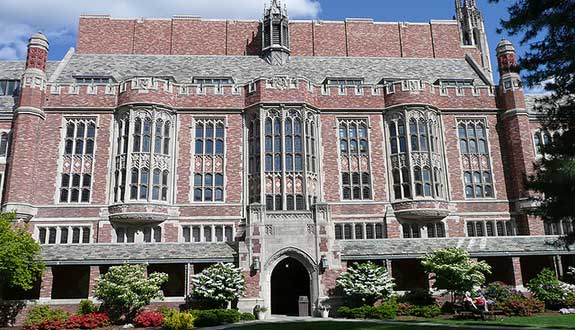Analyzing ‘Top 10 Law Schools For Career Prospects’
- by
- Oct 12, 2015
- Law School, Legal Life
- Reviewed by: Matt Riley


Most people who want to go to law school want to become a lawyer. That’s probably a safe bet. Plus, law school can leave you with a lot of debt to pay off. It’s therefore important to consider employment statistics carefully as you choose a law school.
Writing for Forbes, Susan Adams recently took a look at the “Top 10 Law Schools For Career Prospects”, as ranked by the Princeton Review guide, The Best 173 Law Schools. (Why 173? There are only 204 ABA-accredited law schools in the United States. Those must be some really stringent criteria to get in the book.)
Ranking the top 10 based on bar passage, employment rate, median salary and some student survey questions makes for a bit of a pointless exercise. The real, meaningful difference is between the schools in the top 10 along with their peers and the schools far from the top 10. The problem with ranking the top schools is that their employment statistics are skewed by the choices their graduates make.
Adams notes that Yale doesn’t make the top 10, in part because its graduates often pursue relatively lower-paying clerkships. No one settles for a clerkship out of inability to find something better. These are prestigious jobs. Yale likely ranks lower because its graduates often choose jobs that pay less, not because those graduates have fewer or worse options. Or maybe the student survey scores weren’t so hot. Who knows?
Penn ranks number one. It’s a great place to go to law school. No argument there. But no one should choose Penn over Yale because of this ranking. The law schools where graduates have trouble getting a job are far from making the list in the first place. So pay attention to career prospects as you apply. There are some good resources to help you do your research. But don’t let a top 10 list sway your thinking if you’re choosing between two good options.
Search the Blog

Free LSAT Practice Account
Sign up for a free Blueprint LSAT account and get access to a free trial of the Self-Paced Course and a free practice LSAT with a detailed score report, mind-blowing analytics, and explanatory videos.
Learn More
Popular Posts
-
logic games Game Over: LSAC Says Farewell to Logic Games
-
General LSAT Advice How to Get a 180 on the LSAT
-
Entertainment Revisiting Elle's LSAT Journey from Legally Blonde








